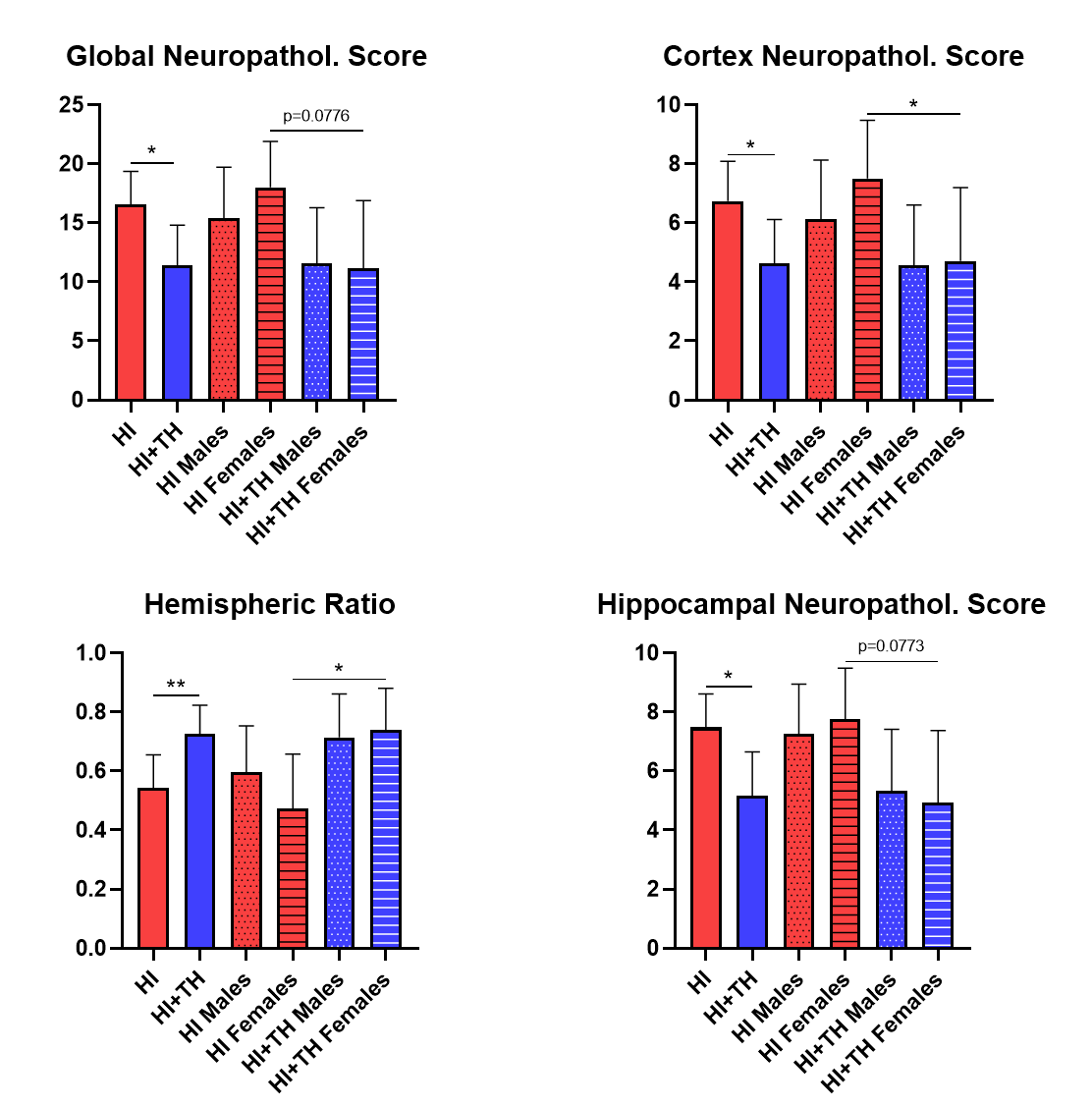Neonatology
Session: Neonatal Neurology 8: Preclinical
318 - Sex dimorphic responses to therapeutic hypothermia after moderate-to-severe hypoxia-ischemia in neonatal rats
Monday, May 6, 2024
9:30 AM - 11:30 AM ET
Poster Number: 318
Publication Number: 318.3092
Publication Number: 318.3092
- DA
Daniel Alonso-Alconada, PhD
Associate Professor
University of the Basque Country (UPV/EHU)
Leioa, Pais Vasco, Spain
Presenting Author(s)
Background: The influence of sex in neurological conditions like neonatal encephalopathy is under active investigation. However, preclinical works have revealed controversial results when evaluating the presence of sex dimorphism after hypoxia-ischemia (HI), with studies reporting that male animals are more severely affected, whereas other works suggest the opposite or even no sex-differences in lesion size after HI. Animal models are used to search for therapeutic approaches, like therapeutic hypothermia (TH), whose neuroprotective impact may be critically modulated by sex.
Objective: To explore a sex dimorphic response to a moderate-to-severe hypoxic-ischemic event in neonatal rats and to evaluate which sex responds better to TH.
Design/Methods: On postnatal day 7 (P7), fifty-nine Sprague Dawley rat pups were subjected to left common carotid artery permanent occlusion + 8% oxygen for 120 min. Animals were then randomised to normothermia (HI, n=27; 15 males and 12 females) or to hypothermia at 32.5-33ºC for 3h (HI+TH, n= 32; 18 males and 14 females). On P14, brains were obtained and sectioned to evaluate brain infarction (hemispheric and hippocampal ratios), and global and regional grey (neuropathological score) and white matter (myelin basic protein expression) damage. A p< 0.05 was considered significant.
Results: Compared to non-treated pups (HI), hypothermic animals (HI+TH) showed reduced hemispheric infarction (p < 0.01), lower global (p < 0.03), cortical (p < 0.05) and hippocampal (p < 0.03) neuropathological scores, and higher protection of white matter tracts (p < 0.0001). We next analysed if sex may modulate HI-induced brain injury and/or hypothermic response. Normothermic-males and females showed no differences in any of the parameters evaluated, suggesting lack of effect of sex in non-cooled pups from this moderate-to-severe model. However, hypothermia generated a stronger neuroprotective response in females (p < 0.05), with the following improvements (females vs males): stronger reduction in hemispheric (-36.0% vs -16.5%) and hippocampal (-47.3% vs -29.9%) infarction, improved global (61.5% vs 33.2%), cortical (59.1% vs 34.6%) and hippocampal (57.2 vs 36.2%) neuropathological scores, and augmented protection of white matter tracts (69% vs 52.2%).
Conclusion(s): In a moderate-to-severe preclinical model of HI, sex may modulate responses to therapeutic hypothermia. Acknowledgments: Grant MINECOR20/P66 funded by MCIN/AEI/10.13039/501100011033 and by “ERDF A way of making Europe”, UPV/EHU predoctoral grant (PIFBUR22/03).

